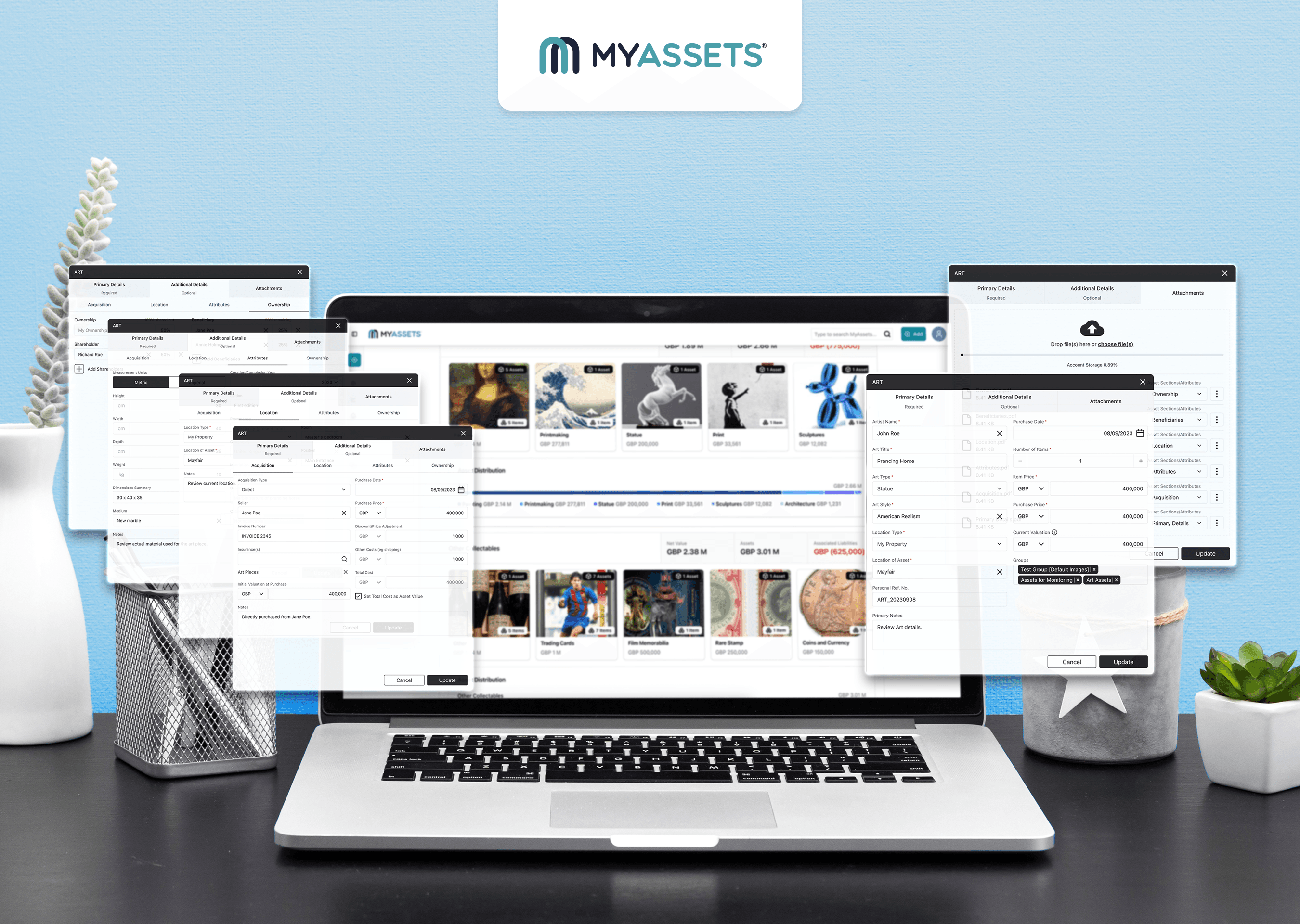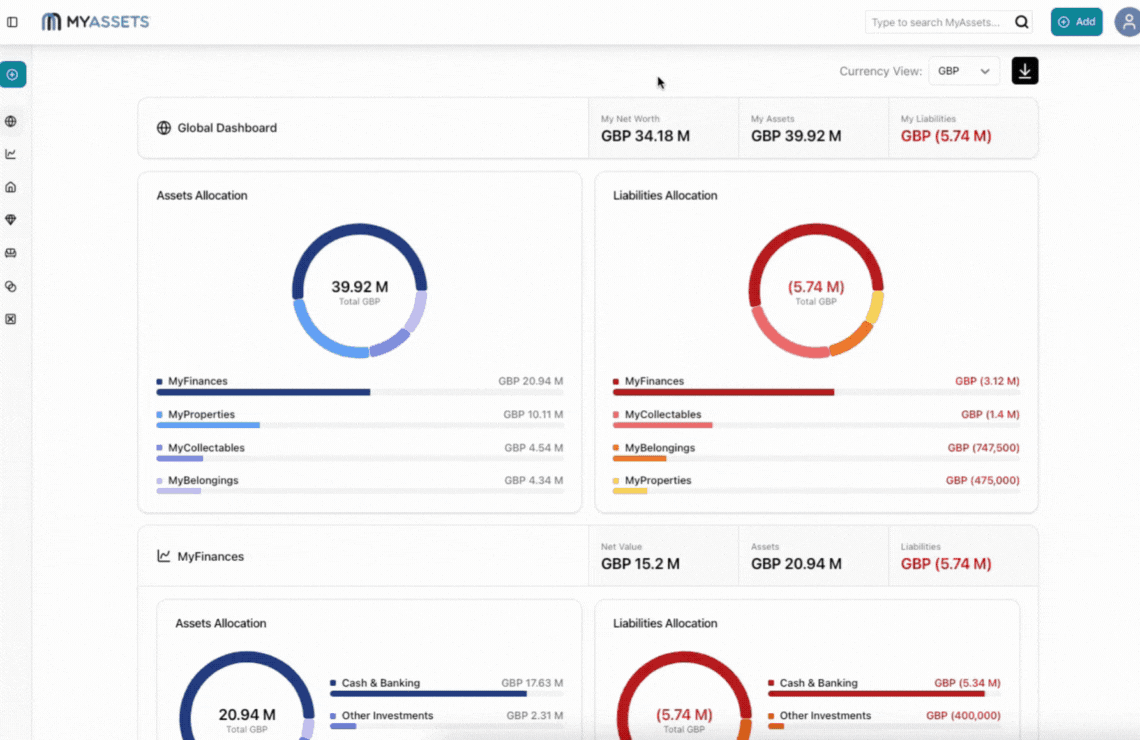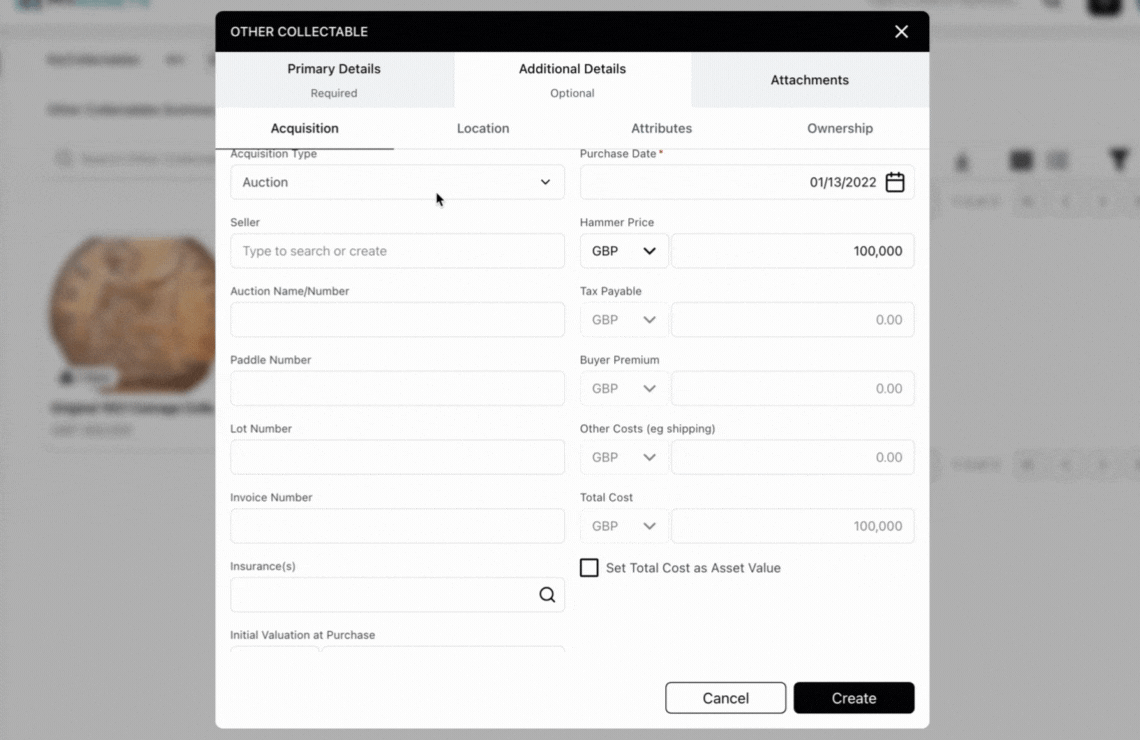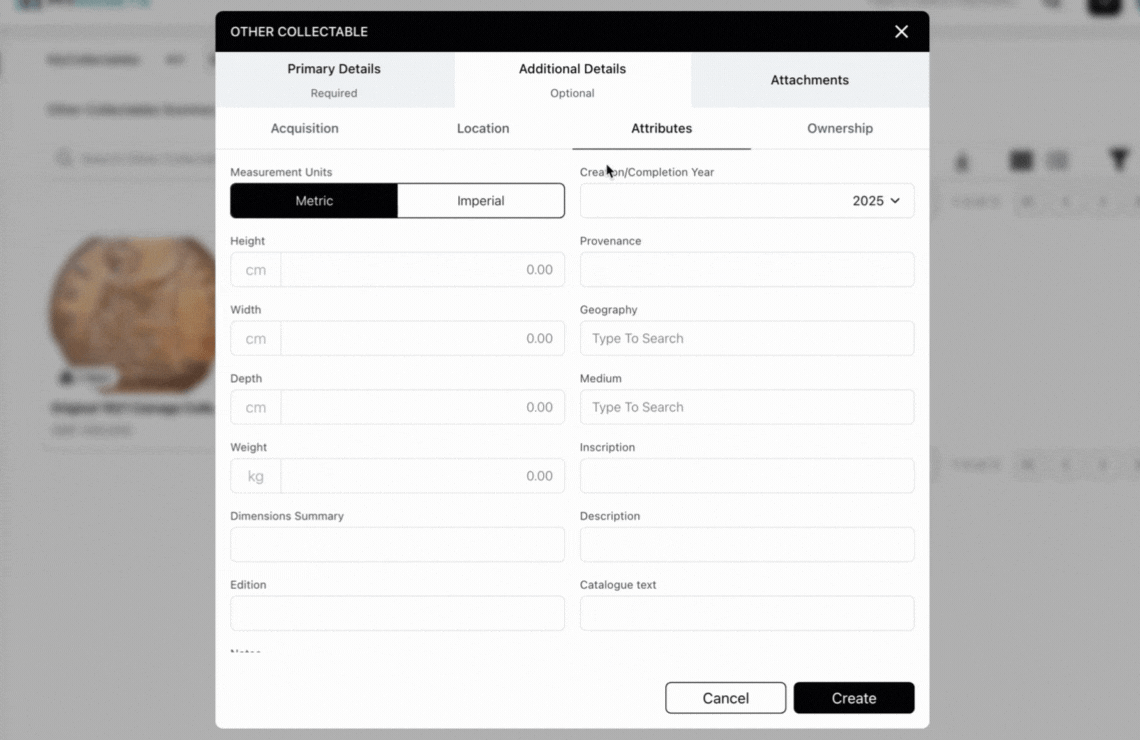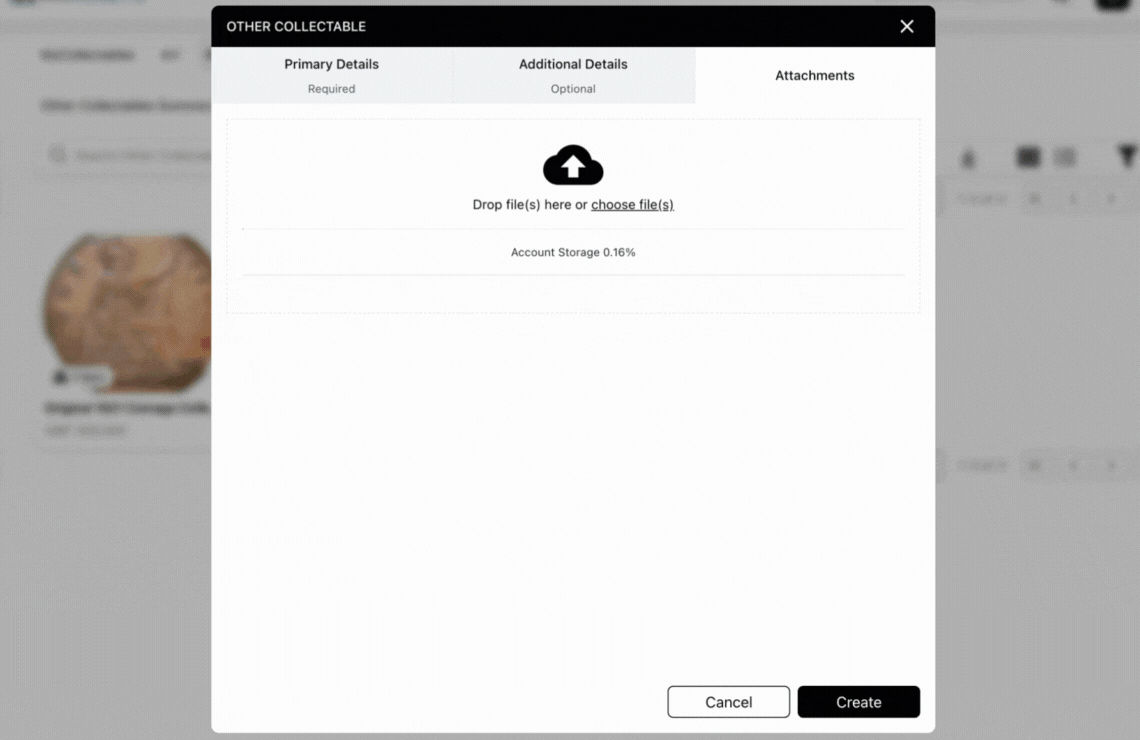Collecting isn’t a recent fad; it’s woven into the human story. From ancient cultures that treasured pottery and sacred objects to monarchs who surrounded themselves with art and relics to showcase power and faith, collecting reflects our deepest impulses: to remember, to understand, and to feel connected.
According to Professor Andrew Dillon at the University of Texas, people collect for many intertwined reasons, such as aesthetic pleasure, personal identity, emotional resonance, and social signalling.
As the world changes, so too does what we collect and how we value our collections. For example, art as an investment illustrates how objects, particularly artworks, do more than simply decorate our space. They can act as alternative investments, combining beauty and financial value, rarity and reputation, emotion and economic potential.
For many, having collectables isn’t just about acquiring but about recording: capturing provenance, value, stories, and attributes so each item in a collection becomes more than an object—it becomes data, memory, asset.
This is where MyAssets comes in. In this post, we’ll explore how to record the key details of your collectables in MyAssets: things like item name, price, provenance, insurance, images, related certificates, storage location and even the more comprehensive, descriptive traits of your collection which are known as attributes inside the MyAssets app.
We’ll look at why they matter, what to record, and how capturing them can deepen your connection with your collection while helping you care for it more intentionally. Because when you document what makes each item unique, you preserve not just its physical presence, but also its full meaning.
- Recording-Keeping in MyAssets: What Attributes to Include and Why It Matters
- Top 6 Reasons to Record Details About Your Collection
- Common Mistakes Collectors Make When Documenting Collectables
- How to Keep Proper Records of Collectables with MyAssets
- Include Primary Details of Your Collectables in MyAssets
- Include Additional Details of Your Collectables in MyAssets
- Add the Attributes of Your Collectables in MyAssets
- Interlink Your Collectables to Other Assets in MyAssets
- Use MyAssets to Upload Relevant Documents to Your Collectables
- Collectable Record Keeping Made Simple with MyAssets
- Frequently Asked Questions: What Information to Include in a Collectable Database
Recording-Keeping in MyAssets: What Attributes to Include and Why It Matters
Collecting isn’t merely accumulation. As the article Mental Health and Collecting explains, collecting reduces stress and enhances emotional expression, social connection, and even a sense of purpose. Documenting collectables you have becomes part of this positive cycle:
- Cognitive engagement: Researching provenance, comparing prices, tracking the condition of your collectables are activities sharpen memory, planning, and executive functioning.
- Purpose and achievement: Each acquisition or update in your records is a milestone. Seeing your collection grow and being able to say, “I have 50 pieces catalogued by period”, reinforces self‑efficacy.
- Emotional meaning: Noting what makes an item special helps preserve personal stories, nostalgia, and identity.
You can track your collections by cataloguing all core and acquisition details, particularly recording the attributes of your collectables – whether art, antiques, or other cherished objects. There are several key details you should always include. More than just a “nice to have,” these details tap into the deeper, personal, mental, and even emotional significance of collecting.
Here are several key details that you should capture when tracking collectables information:
- Core Identification Details: Artist or creator; title/name of the piece; medium; dimensions; date of creation. These ensure you can uniquely identify an item.
- Acquisition Information: When and how you acquired it (purchase, gift, inheritance); purchase price; source (gallery, auction, private seller).
- Provenance: Any authentication certificates, receipts, historical ownership records—essential for proving legitimacy and maintaining or growing value.
- Condition Details: Note wear, damage, restorations; take clear photos, including close‑ups of unique features or flaws.
- Value Estimates: Market value based on recent comparisons, replacement value, and insurance value.
- Location: Where the item currently is (home, storage, on loan, etc.).
- Organisational Tags: Categorise by style, period, type, theme, or artist. This helps in sorting, searching, and seeing relationships between items.
When keep complete, accurate records, not only does locating and displaying your collectables become easier, but it also smoothens tasks like insurance, valuation, consignments, or lending for exhibitions.
Recording the attributes of your collectables is more than just good record‑keeping; it’s a map of what those items mean to you, how they connect to your identity, how they grow over time, and how you preserve their value. If you keep these details, you don’t just own objects, you preserve your stories.
Read more: The Best Collectables To Add In Your Investment Portfolio
Top 6 Reasons to Record Details About Your Collection
Here are six reasons you should prioritise your collectable record-keeping.
- Value Assessment: Detailed records, such as purchase price, current market comparisons, photos, and condition history, let you accurately estimate the value of your items. This helps track appreciation or depreciation over time.
- Insurance Purposes: Insurers often require proof of ownership, condition, and value. Clear documentation makes filing claims easier and ensures you get fair compensation in case of loss, damage, or disaster.
- Resale Potential: Serious buyers often expect full provenance, condition reports, proofs of authenticity, and high‑quality images. When you can present detailed records, you’re more likely to attract serious offers and achieve higher prices.
- Provenance Tracking: Knowing who owned the item before you, whether it’s been exhibited, any auctions or with certifications, adds to authenticity, prestige, and often monetary value.
- Loss Protection: If you document the current condition (with photographs, notes), you can prove later if damage was recent or pre‑existing, which aids in insurance claims or repair/restoration decisions.
- Theft Recovery: If an item is stolen, documentation helps law enforcement or insurers identify it: serial numbers, photos, and certificates are useful.
Common Mistakes Collectors Make When Documenting Collectables
Collectors often stumble when keeping records of critical attributes – such as provenance, dates, condition, and storage location. Three of the most common mistakes that collectors can make in tracking collectable attributes include:
- Leaving gaps in records can weaken authenticity claims and make valuation harder.
- Storing items improperly, such as exposing them to light, humidity, or physical abrasion, can degrade their condition over time.
- Relying solely on paper ledgers or a single digital file makes these items vulnerable to loss, damage, or corruption without redundant backups.
To counter these pitfalls, it’s important to develop a clear, structured approach to better organise your collectables:
- Use an asset management app like MyAssets to record full, consistent attribute sets: titles, acquisition dates, condition notes, and storage location.
- Categorise and tag each item (by type, era, theme) and subdivide where necessary, so you won’t lose track of subsets within your collection.
- Use proper physical storage: sleeves, acid‑free boxes, padded containers, and stable climate control to prevent deterioration or damage.
- Maintain a digital log and backup strategy, store the digital data in the cloud or on multiple devices, and periodically audit your records.
Adopting structured digital tools and smart storage greatly strengthens the integrity and longevity of your collections.
Learn more: How to Let Go of Sentimental Items: Decluttering Tips
How to Keep Proper Records of Collectables with MyAssets
Here’s a step-by-step guide on how to use MyAssets in organising your collectables information.
1. Include Primary Details of Your Collectables in MyAssets
To properly add collectables in MyAssets, users should begin by entering the Primary Details of the item in MyCollectables. This will serve as the foundation of each asset’s record, and it includes the following fields:
- Collectable name
- Collectable type
- Purchase date
- Purchase price
- Location
- Current valuation
The required fields in Primary Details are essential for organising your collectables efficiently and maintaining consistency across entries. This information uniquely identifies your items and provides a clear record for tracking, insurance, or resale purposes. Once these are completed, you can enrich the listing by providing additional details about the collectable.
2. Include Additional Details of Your Collectables in MyAssets
MyAssets allows you to enrich each collectable’s record by adding Additional Details that go beyond basic identifiers. Key among these include:
- Acquisition: Record how you obtained the item, including the purchase date, price, seller or source (e.g. auction house, private sale, gift). This information helps with monitoring the item’s valuation over time, insurance, and verifying authenticity.
- Location: Include where the collectable is physically stored (i.e. which property or room) or who is holding it. With MyAssets, you can assign each item a location type, whether it’s in a property you own or if it’s with a contact in your Address Book. This makes inventory management more precise, especially if you store parts of your collection in different places.
- Ownership: details include who owns the item, whether it is co‑owned, held in trust, or has beneficiaries. MyAssets allows assigning ownership data and beneficiary information. This is essential for legal clarity and estate planning.
By filling in these Additional Details in MyAssets, a collector not only builds a richer catalogue but also ensures clarity for valuation, insurance, or future transfer.
3. Add the Attributes of Your Collectables in MyAssets
In MyAssets, attributes of collectables refer to comprehensive, descriptive traits beyond just the basic “Primary Details.” These are the attributes you can include in MyAssets for your collectables:
- Dimensions summary: The measurement details of the collectable (e.g. height, length, width, depth, etc.).
- Edition: The specific version or format of the collectable.
- Creation year: The date when the collectable was created or completed.
- Provenance: The record of previous ownership of the collectable.
- Geography: The current location of the collectable.
- Medium: The primary material or substance used in creating the collectable.
- Inscription: The words inscribed onto the collectable, if applicable.
- Description: A unique descriptor to identify the item.
- Catalogue text: The documentation of the collectable’s attributes, function, etc.
By capturing comprehensive collectable attributes in MyAssets, you build a richer, more usable database. You can compare items, filter by specific traits, validate authenticity, and present clearer reports for insurance or resale.
4. Interlink Your Collectables to Other Assets in MyAssets
In MyAssets, Smart Asset Linking enables you to interconnect your collectables with other asset categories in the platform, creating a cohesive and dynamic asset ecosystem.
For instance, you can assign a collectable item, like a vintage watch, to a specific property listed under MyProperties. This connection allows you to know exactly where the item is stored and facilitates easy access when needed.
Similarly, linking an insurance policy under MyFinances to a collectable can help track the item’s value over time, aiding in insurance assessments or resale evaluations. This integration provides a comprehensive view of your asset's financial impact.
By leveraging Smart Asset Linking, MyAssets allows you to manage and track your diverse assets across various categories, ensuring a streamlined and efficient asset management experience.
5. Use MyAssets to Upload Relevant Documents to Your Collectables
The Document Vault feature in the MyAssets platform includes a file storage system that supports your record-keeping for collections.
- You can attach documents and photos directly to each collectable (e.g. receipts, warranties, condition reports, certificates of authenticity).
- Files are organised by linking them to the relevant asset, and even to specific “asset sections” or attributes (e.g. condition report, provenance, display location).
- Retrieval and categorisation tools ensure you can quickly find proof or documentation when needed, which is useful for resale, insurance, or legal purposes.
- The digital vault is secure and centralised, reducing the risk of losing physical paperwork; backup and cloud‑based storage help guard against data loss.
Collectable Record Keeping Made Simple with MyAssets
Managing collectables has never been easier with MyAssets, an all-in-one digital asset management platform. It consolidates various asset categories into a unified system, allowing for seamless organisation and tracking. Through Smart Asset Linking, you can connect collectables to other assets across different categories. This interconnected approach ensures comprehensive oversight and simplifies asset management.
MyAssets also offers features like secure document storage, real-time tracking, and customizable groupings, enhancing the user experience. With bank-grade encryption ensuring data security, MyAssets provides a reliable and efficient solution for managing your valuable items.
Frequently Asked Questions: What Information to Include in a Collectable Database
1. What does it mean to record collectable details?
Recording collectable attributes involves documenting key details about each item, such as its condition, rarity, purchase date, provenance, estimated value, and even descriptive attributes such as size and shape.
2. Why should I record all information about my collectables?
Keeping a record helps with valuation, resale, insurance claims, theft recovery, and overall organisation of your collection.
3. What are the essential attributes to record for collectables?
Common attributes include item name, condition, edition, serial number, purchase price, current value, and provenance.
4. How do I start tracking collectables information effectively?
You can use spreadsheets, inventory software, or specialised apps like MyAssets to start tracking your items in an organised format.
MyAssets for Collectors: Manage Your Collections with Ease
MyAssets is an excellent solution for organising, tracking, and managing collectables due to its user-friendly interface, comprehensive features, and centralised platform. It allows you to catalogue collectables with detailed information, images, and categories, making it easy to locate and monitor collections of any size.
The platform also supports secure data storage and backup, reducing the risk of loss or mismanagement. Whether for hobbyists or serious collectors, MyAssets streamlines collection management, enhances organisation, and provides valuable insights, making it an indispensable tool for preserving and maximising collection value.
Start your MyAssets 14-day free trial today and manage your collectables efficiently.
